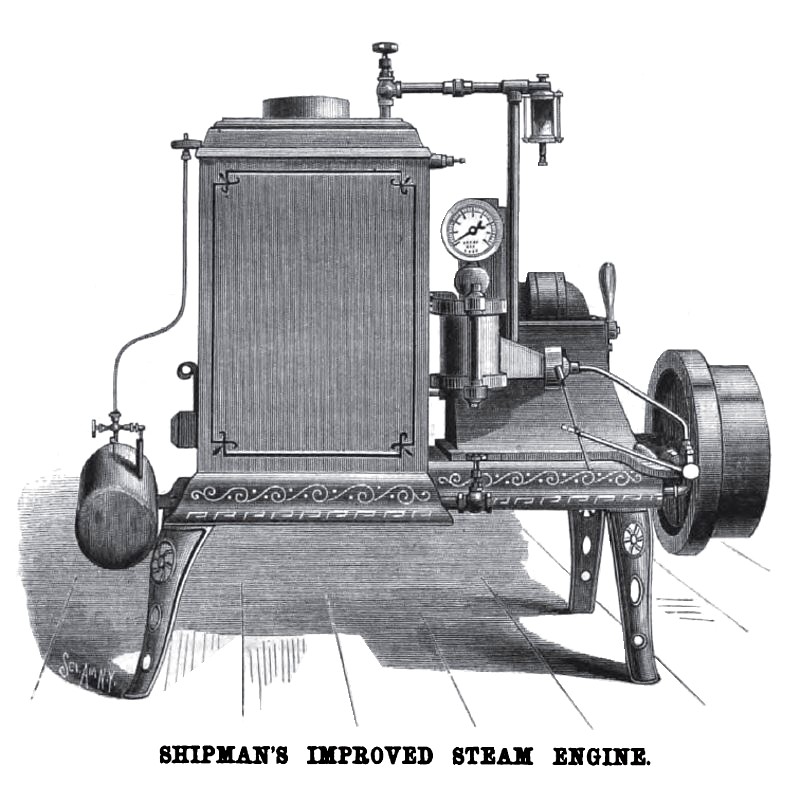|
Title: |
1884 Article-A. H. Shipman, Steam Engine |
|
Source: |
Scientific American, V 50 #14, 05 Apr 1884, pg. 211 |
|
Insert Date: |
8/16/2013 1:31:01 PM |
IMPROVED STEAM ENGINE.
The annexed engraving shows a compact and light steam engine and boiler of simple construction, manufactured by Mr. A. H. Shipman, of Rochester, N. Y. The boiler is made from cast iron sections, having wrought iron tubes screwed into them, and bolted together. Radiation is prevented by double jackets of sheet iron having an air space between them. An intense blast of fire is formed by pressure of air or steam flowing through an atomizer which throws a fine spray of kerosene into a fire box in the boiler, the fire being in the boiler increases, the diaphragm closes, and the amount of steam admitted to the atomizer diminishes accordingly, thereby regulating the quantity of oil burned.
A lowering of the pressure produces a contrary effect, and the fire is increased. The tank of oil can be kept at any distance from the engine and brought to it by a pipe. An automatically regulated pump, with plunger connected direct to main shaft by an eccentric, keeps the boiler constantly supplied with the proper quantity of water. The engine is placed in close proximity to the boiler, so that loss resulting from the use of long connections is avoided.
The cylinder and its parts are enclosed in a steam tight box in which the steam exhausts. This keeps the cylinder hot, and insures the complete oiling of all the parts.
The engine has two cylinders, with steam chest between them, and two piston heads, one to each cylinder, connected with a small rod. The pistons are hollow, and as the movement is vertical there is no friction caused by their weight. The lower piston head is connected with the pitman, which is attached direct to the main shaft, no crosshead or slides being used. The valve is balanced. A governor acting direct upon the valve is applied to engines for stationary work.
The engine is especially designed for propelling small boats because of its small size, light weight, little attention required and the small amount of room needed for storing fuel; when it is to be used for this purpose it is made reversible. The engine shown in the cut is furnished with a balance and band wheel for stationary work. |
|
 1884 A. H. Shipman, Steam Engine
1884 A. H. Shipman, Steam Engine
|
|